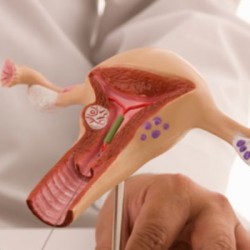Dilation and curettage (D&C) is a procedure to remove tissue from inside your uterus. Gynaecologist in Muzaffarpur performs dilation and curettage to diagnose and treat certain uterine conditions – such as heavy bleeding – or to clear the uterine lining after a miscarriage or abortion.
In a dilation and curettage – sometimes spelled “dilatation” and curettage – your doctor uses small instruments or a medication to open (dilate) your cervix – the lower, narrow part of your uterus. Your doctor then uses a surgical instrument called a curette to remove uterine tissue. Curettes used in a D&C can be sharp or use suction.
Why it’s done
Dilation and curettage can diagnose or treat a uterine condition.
To diagnose a condition
Your doctor might recommend a type of D&C called endometrial sampling to diagnose a condition if:
- You have abnormal uterine bleeding
- You experience bleeding after menopause
- Your doctor discovers abnormal endometrial cells during a routine test for cervical cancer
To perform the test, your doctor collects a tissue sample from the lining of your uterus (endometrium) and sends the sample to a lab for testing. The test can check for:
- Endometrial hyperplasia – a precancerous condition in which the uterine lining becomes too thick
- Uterine polyps
- Uterine cancer
To treat a condition
When performing a therapeutic D&C, your doctor removes the contents from inside your uterus, not just a small tissue sample. Your doctor may do this to:
- Clear out tissues that remain in the uterus after a miscarriage or abortion to prevent infection or heavy bleeding
- Remove a molar pregnancy, in which a tumor forms instead of a normal pregnancy
- Treat excessive bleeding after delivery by clearing out any placenta that remains in the uterus
- Remove cervical or uterine polyps, which are usually noncancerous (benign)
Your doctor may perform the D&C along with another procedure called a hysteroscopy. During a hysteroscopy, your doctor inserts a slim instrument with a light and camera on the end into your vagina, through your cervix and up into your uterus.
Your doctor then views the lining of your uterus on a screen, noting any areas that look abnormal, making sure there aren’t any polyps and taking tissue samples as needed. During a hysteroscopy, your doctor can also remove uterine polyps and fibroid tumors.

